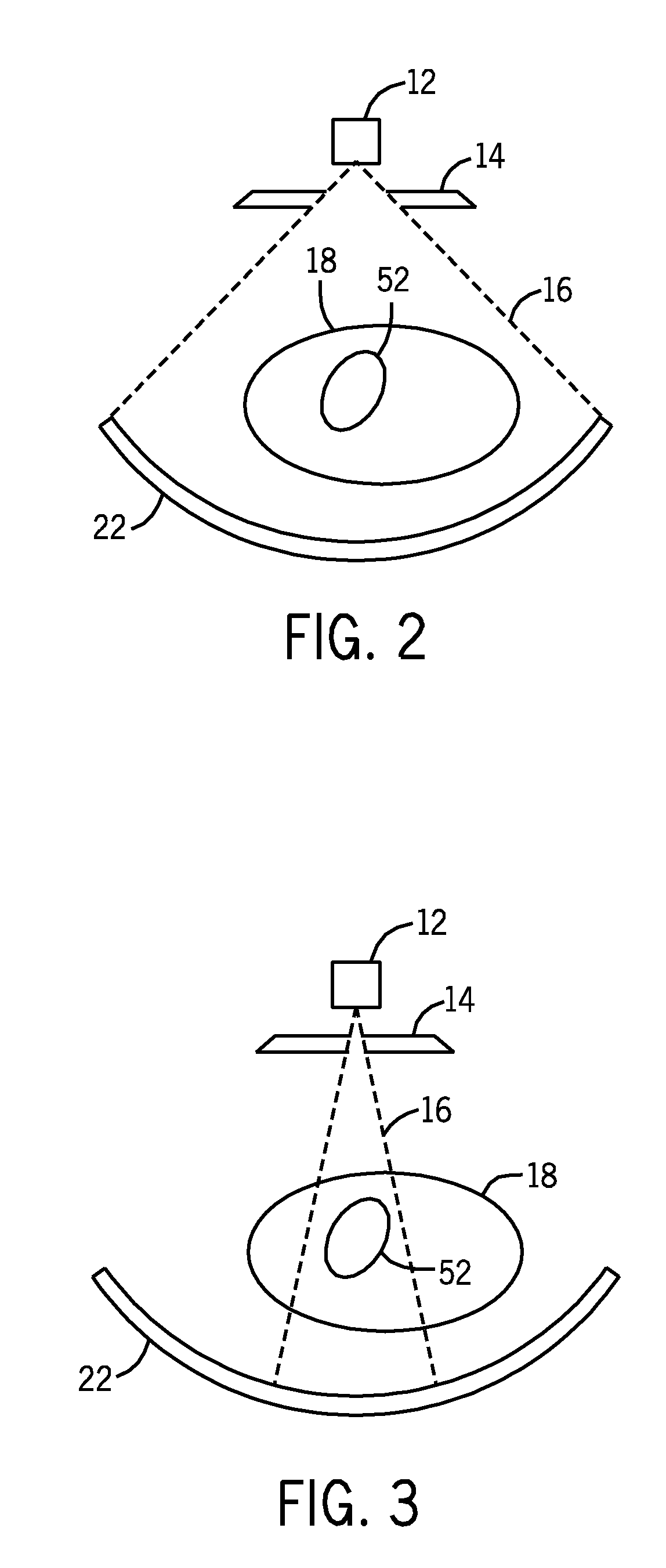Keyhole computed tomography
a computed tomography and keyhole technology, applied in tomography, instruments, applications, etc., can solve the problems of inability to accurately match the estimated projection data with the measured projection data, quantitatively inaccurate regions throughout the reconstructed image, and visible artifacts at the periphery of the reconstructed image, etc., and achieve computationally expensive approaches
- Summary
- Abstract
- Description
- Claims
- Application Information
AI Technical Summary
Problems solved by technology
Method used
Image
Examples
Embodiment Construction
[0024]The embodiments discussed below provide a technique for dynamic CT imaging. More specifically, certain embodiments include acquiring at least one full field of view (FOV) (background) image and a plurality of images of a targeted FOV that is contained with the region associated with the background image. To provide for improved processing performance, in certain embodiments, data in the region of the background image that corresponds to the targeted FOV is replaced with the data from each of the images in the targeted FOV. In some embodiments, one or more of the plurality of images including the targeted FOV are reconstructed based on the data in the targeted FOV and the surrounding data of the background image. Accordingly, in certain embodiments, only a single CT scan of a patient is made to acquire the background image and data for processing and additional CT scans are restricted to the targeted FOV, thereby reducing the dose of X-radiation to the patient while accurately ...
PUM
 Login to View More
Login to View More Abstract
Description
Claims
Application Information
 Login to View More
Login to View More - R&D
- Intellectual Property
- Life Sciences
- Materials
- Tech Scout
- Unparalleled Data Quality
- Higher Quality Content
- 60% Fewer Hallucinations
Browse by: Latest US Patents, China's latest patents, Technical Efficacy Thesaurus, Application Domain, Technology Topic, Popular Technical Reports.
© 2025 PatSnap. All rights reserved.Legal|Privacy policy|Modern Slavery Act Transparency Statement|Sitemap|About US| Contact US: help@patsnap.com



